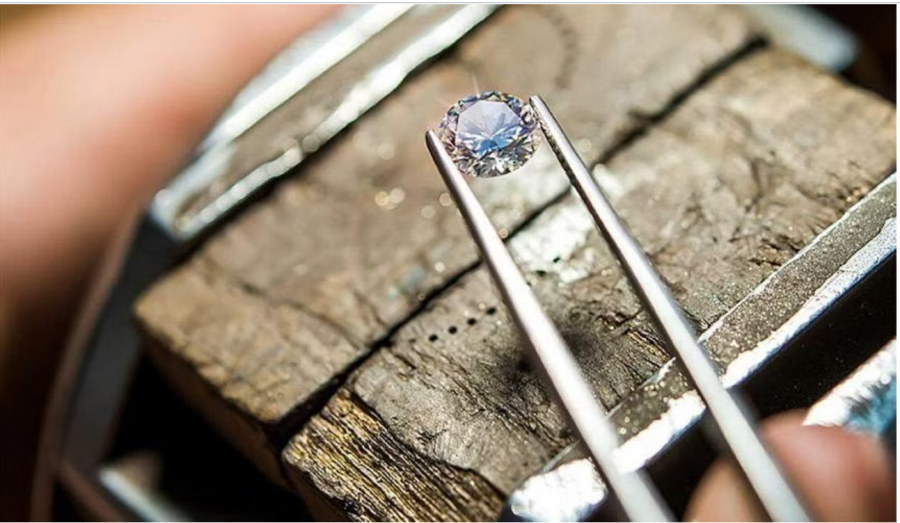May 24, 2023
BENGALURU – The prospect of curbs on Russia’s diamond trade by Group of Seven (G-7) members is causing unease in India’s diamond hub of Surat, already distressed by low global demand.
Nine in 10 of the world’s diamonds are cut and polished in this bustling town in the western state of Gujarat. Surat imports an estimated 35 per cent of its rough diamonds from Russian companies including Alrosa, the biggest global producer of the precious gem.
Talk of a ban on Russian diamonds is weighing heavily on Surat’s more than 4,000 diamond processing companies, which employ at least a million craftsmen, polishers and traders.
At the G-7 Summit in Japan on May 19, leaders pledged to restrict trade in “diamonds mined, processed or produced in Russia” to cut off a crucial source of revenue that is funding President Vladimir Putin’s war on Ukraine.
The G-7 is made up of Canada, France, Germany, Italy, Japan, the United Kingdom and the United States, with the European Union as a non-enumerated member. A joint statement said it would curb the Russian diamond trade, worth US$4.5 billion (S$6 billion) a year, including by using high-tech methods of tracing.
The same day, British Prime Minister Rishi Sunak announced a ban on Russian diamond imports.
Britain, the US, Canada, New Zealand and the Bahamas had already blocked trade with the Russian diamond miner Alrosa in April 2022.
Ukrainian President Volodymyr Zelenskyy has long called for a ban on the import of Russian diamonds. “I believe that peace is way more valuable than diamonds,” he told the Belgian Parliament in March.
“We are awaiting a proper understanding of how the sanctions will be executed, since there is no way to trace the origin of rough gems right now,” said Mr Vipul Shah, chairman of the Gems and Jewellery Export Promotion Council (GJEPC), a body supported by India’s Ministry of Commerce and Industry.
Mr Shah said the trade body is already troubled by lower demand as buyers in recession-hit Western countries, particularly the US, minimise luxury spending.
Also, major markets like China have not fully opened up for trade since they imposed coronavirus restrictions. The soaring price of gold, the primary metal used to set diamonds, has further depressed global demand for jewellery, he added.
The supply of Russian diamonds has also shrunk in India since March 2022, when Western sanctions cut Russia off from the Swift international payment network.
“There is no payment going to Russia, no clearing done in the past six months since banks don’t approve transfers. The Indian government identified some banks with rupee vostro accounts, but it’s not working out,” said Mr Shah.
Around 20 Russian banks, including Gazprom and Rosbank, have opened rupee vostro accounts with authorised dealer-banks in India to enable rupee-based trade. But amid India’s 400 per cent jump in merchandise imports from Russia (a third of it from record crude oil purchases of 1.6 million barrels per day in February), Moscow does not seem to want excess rupees piling up.

Talk of a ban on Russian diamonds is weighing heavily on Surat’s more than 4,000 diamond processing companies. PHOTO: GJEPC
The diamond industry is feeling the pinch. Exports of cut and polished diamonds fell by 38.86 per cent in April 2023, compared to the same month in 2022.
“Sanctions on our major rough diamond supplier during an existing economic slump will affect our sales and exports. But the worst effect will be on the workforce,” said Mr Shah.
Mr Jayantibhai Savaliya, president of the Surat Jewellery Manufacturers’ Association, said that in the past six months, diamond processing units had implemented staggered working hours, worked half days or half weeks, or sent their workers on 10 days of paid leave a month.

Nine in 10 of the world’s diamonds are cut and polished in this bustling town in the western Indian state of Gujarat. PHOTO: GJEPC
Gujarat’s Diamond Workers’ Union and the Surat district administration reported that many firms were sending workers on “vacation”, a euphemism for unpaid leave.
The union’s vice-president Bhavesh Tank told The Print that at least 200 diamond companies have stopped operations.


